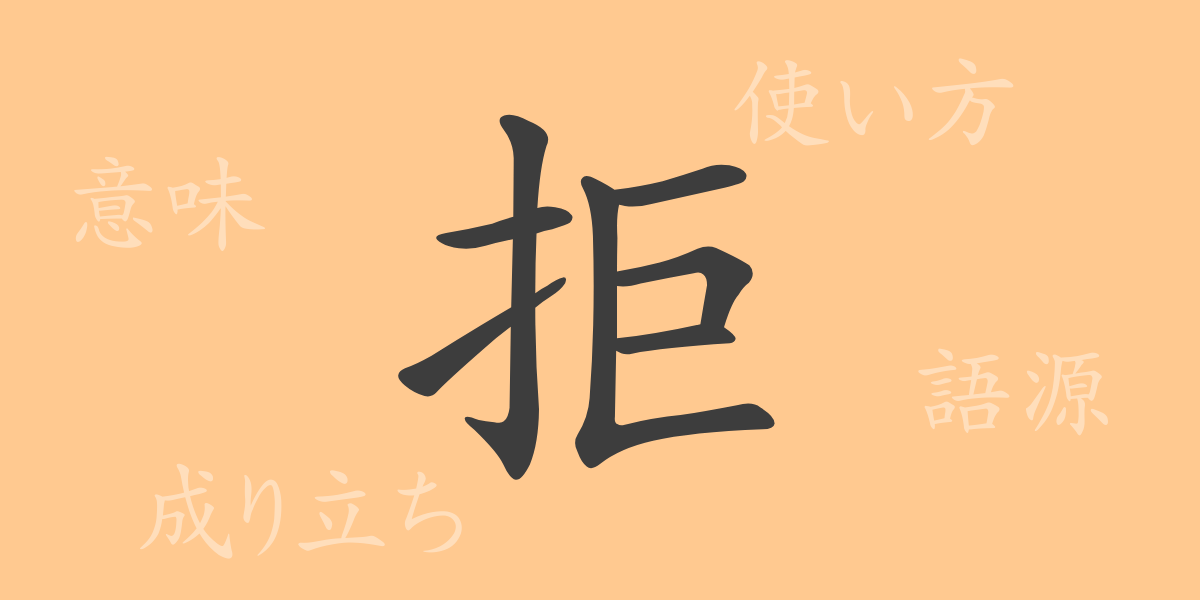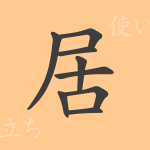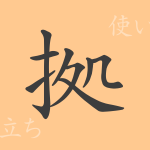In Japanese, there are numerous kanji characters that possess rich expressive power. Among them, the kanji “拒(こばむ, kyofu)” is an intriguing character used to express strong will or resolute attitudes. This article delves into the origins, meanings, usage, readings, and idiomatic expressions involving “拒(こばむ, kyofu),” providing a comprehensive look at this compelling character.
Origin of 拒(こばむ, kyofu)
The kanji “拒(こばむ, kyofu)” is composed of the radical for hand “扌(てへん)” and the character for dog “狗(いぬ).” This combination evokes the image of a dog pushing away with its paw, symbolizing the act of refusing or rejecting. Evolving from ancient Chinese pictographs, this kanji visually represents the forceful act of pushing something away.
Meanings and Usage of 拒(こばむ, kyofu)
The kanji “拒(こばむ, kyofu)” means “to refuse,” “to reject,” or “to decline.” It is used to indicate actions or attitudes that do not accept or admit something. Most commonly, it appears in the form “拒否(きょひ, kyohi),” meaning “refusal” or “rejection,” and is frequently seen in business contexts and legal terminology.
Readings, Stroke Count, and Radical of 拒(こばむ, kyofu)
Here is a breakdown of the readings, stroke count, and radical for the kanji “拒(こばむ, kyofu).”
- Readings: The on-yomi (Chinese reading) is “キョ(きょ, kyo),” and the kun-yomi (Japanese reading) is “こば.む(こばむ, kobamu).”
- Stroke count: “拒(こばむ, kyofu)” consists of 8 strokes.
- Radical: The radical is “扌(てへん)” which means “hand.”
Idioms, Proverbs, and Phrases Using 拒(こばむ, kyofu)
There are various idioms, proverbs, and phrases in Japanese that incorporate the kanji “拒(こばむ, kyofu).” Here are a few examples:
- 拒否反応(きょひはんのう, kyohi han’nō) – A psychological reaction that naturally opposes something.
- 拒絶権(きょぜつけん, kyozetsuken) – The right to formally refuse or reject a decision or proposal.
- 門前払い(もんぜんばらい, monzenbarai) – To turn someone away without meeting them, metaphorically meaning to be ignored or rejected.
Summary of 拒(こばむ, kyofu)
The kanji “拒(こばむ, kyofu)” symbolizes denial and resistance, playing an important role in the Japanese language. Its unique origin and meaning reflect the depth of the language, frequently used in idioms and proverbs in daily life. Through this exploration, we have gained a deeper understanding of the powerful imagery and usage of “拒(こばむ, kyofu).”

























